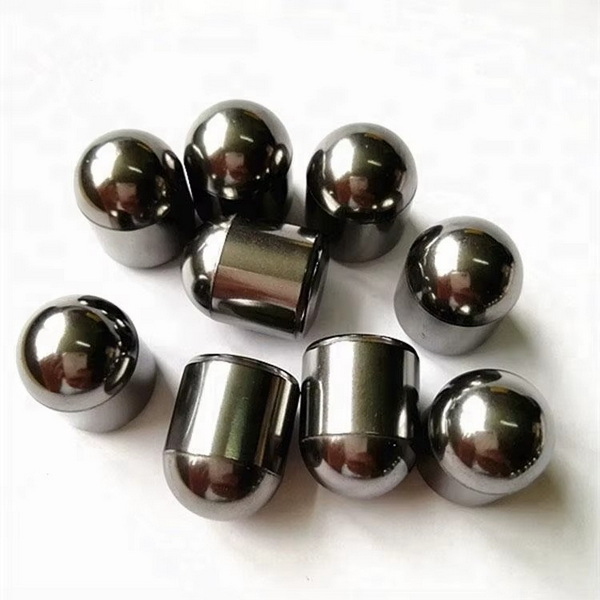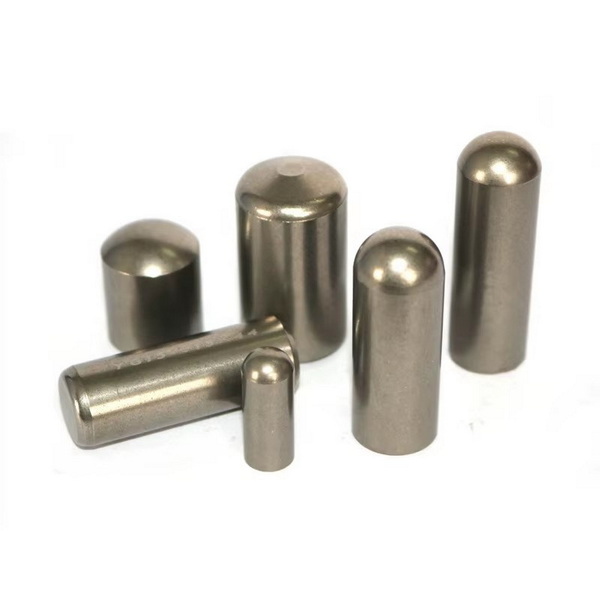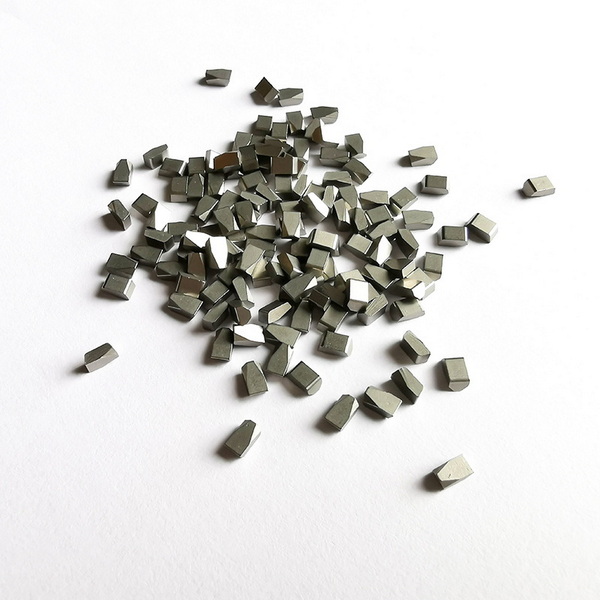Content Menu
● Introduction
● Carbide Button Fundamentals
>> Material Composition and Properties
● Manufacturing Process of Carbide Buttons
>> Raw Material Preparation
>> Powder Compaction and Forming
>> Sintering
>> Secondary Machining and Finishing
>> Inspection and Quality Control
● Techniques for Inserting Carbide Buttons into Drill Bits
>> Copper Brazing
>> Cold Pressing
>> Hot Pressing
● Innovations in Italian Carbide Button Manufacturing
● Italian Excellence: Leading Carbide Button Manufacturers and Suppliers
>> Sinter Sud Srl
>> Tungstentools Italia SRL
>> Sarmec
>> Maribert S.r.l.
● OEM Service Capabilities and Advantages
● Typical Applications of Italian Carbide Buttons
● Selecting the Right Carbide Button Supplier in Italy
● Market Trends and the Future of Carbide Buttons in Italy
● Conclusion
● Frequently Asked Questions (FAQ)
>> 1. What are the main applications for carbide buttons?
>> 2. Why choose Italian carbide button manufacturers and suppliers?
>> 3. Do Italian carbide button suppliers offer OEM and custom button designs?
>> 4. How do Italian firms ensure carbide button quality?
>> 5. What is the difference between copper brazing, cold pressing, and hot pressing for button insertion?
Introduction
Carbide buttons are vital wear-resistant components used across mining, drilling, construction, and heavy-duty industrial applications. Their outstanding hardness and durability make them a preferred element for rock drilling bits, road planning tools, and high-stress machinery. Italy stands as a European hub for carbide technology, renowned for manufacturers that blend tradition, innovation, and strong quality standards. This article explores the leading carbide button manufacturers and suppliers in Italy, highlighting OEM and customization capabilities for global brands, wholesalers, and industrial buyers.

Carbide Button Fundamentals
Carbide buttons, most commonly made from tungsten carbide, are compact, sintered metal-ceramic parts known for their superior hardness, toughness, and resistance to abrasion. They are engineered to withstand the punishing environments encountered in mining and drilling operations. Their dense structure and intricate shape allow for maximum efficiency in rock breaking and tool longevity.
Material Composition and Properties
Tungsten carbide is the preferred material due to its unique combination of hardness and strength. The addition of cobalt enhances toughness and impact resistance. Some specialized buttons may incorporate small quantities of titanium, tantalum, or other alloying elements depending on application requirements. This careful material selection ensures that each carbide button can endure intense pressure and repeated shocks without fracturing or losing effectiveness.
Manufacturing Process of Carbide Buttons
The creation of carbide buttons involves a series of precise, technology-driven steps designed to maximize performance and consistency. Italian manufacturers excel at executing each phase with advanced machinery and skilled expertise, ensuring high product quality for global clients.
Raw Material Preparation
Production begins with the selection and fine mixing of raw powders—usually tungsten carbide, cobalt, and occasionally other alloying agents. Strict control over particle size distribution and purity is crucial, as inconsistencies can lead to weaknesses or porosity in the finished button. Modern Italian factories often operate advanced powder processing lines to guarantee homogeneity.
Powder Compaction and Forming
Once mixed, the powder is poured into specially designed molds and compacted under high pressure, forming the desired button geometries. The pressure used can exceed several tons, resulting in a dense but fragile green body that reflects the preliminary dimensions and shape. The compaction stage demands extreme precision, as any irregularity can affect the button's performance or create defects.
Sintering
The compacted buttons enter a sintering furnace, typically heated to temperatures above 1400°C. During sintering, the powder particles fuse into a single, solid mass. This transformation dramatically boosts properties such as hardness, impact resistance, and wear resistance. Italian carbide button manufacturers deploy computer-controlled atmospheres to ensure optimal sintering conditions, carefully balancing temperature, time, and atmospheric composition. The resulting structure is both robust and stable, matching the required industrial specifications.
Secondary Machining and Finishing
Post-sintering, the buttons undergo secondary machining operations including grinding, polishing, and surface modification. Advanced CNC grinders and lathes shape the buttons to exacting dimensions, eliminating surface irregularities and achieving mirror-like finishes. Some applications demand the application of performance-enhancing coatings such as titanium nitride, which boosts wear resistance and anti-corrosion properties. Manufacturers continually invest in cutting-edge equipment to uphold quality and precision.
Inspection and Quality Control
Rigorous testing and inspection are fundamental to Italian manufacturing culture. Quality control teams meticulously assess each button for dimensional accuracy, density, hardness, and overall integrity. Advanced metrology instruments, including laser scanners and automated vision systems, are standard in ensuring only flawless buttons are shipped to industrial clients.
Techniques for Inserting Carbide Buttons into Drill Bits
The integration of carbide buttons into drill bits is a highly specialized process that influences tool performance and longevity. Italian manufacturers typically use three primary techniques:
Copper Brazing
Copper brazing involves welding the carbide button into a pre-drilled hole in the drill bit body using copper or silver solder. This method offers robust impact resistance but carries risks of inducing thermal stress in the carbide, which could lower hardness and promote micro-crack formation. It is mostly reserved for specific, single-use bit types.
Cold Pressing
Cold pressing relies on mechanical force to insert the button at room temperature, utilizing an interference fit. While this technique boosts production efficiency and lowers costs, it can sometimes cause damage if tolerances are not optimally selected or maintained. Cold pressed buttons are commonly used in less abrasive environments and for certain lower-cost applications.
Hot Pressing
The hot pressing method, widely regarded as the industry benchmark, heats the drill bit body to expand the button hole, allowing for easy insertion of the carbide button. As the bit cools, it contracts, locking the button in place with minimal stress. This technique maximizes button hardness, wear resistance, and overall tool lifespan, making it ideal for demanding, hard-rock conditions.

Innovations in Italian Carbide Button Manufacturing
Italian manufacturers stand at the forefront of carbide button technology, continually refining processes and products to meet evolving industrial demands. Cutting-edge advancements include:
- Use of nanostructured carbide powders to provide enhanced toughness and resistance to chipping.
- Adoption of automated pressing and sintering lines that improve production efficiency and product uniformity.
- Implementation of high-performance surface coatings, such as diamond-like carbon, which further extend tool life in extreme conditions.
- Batch traceability from powder mixing to final packaging, ensuring every button's origin and production history are documented for compliance and quality assurance.
- Custom geometries tailored for specific applications—such as double-dome, hemispherical, or ballistic profiles—to optimize penetration rates and wear patterns in different rock formations.
Italian Excellence: Leading Carbide Button Manufacturers and Suppliers
Italy's reputation as a center for precision engineering is reflected in its robust network of carbide button producers. These firms are trusted partners for international brands seeking OEM and private label manufacturing, and they continually elevate standards through innovation and service.
Sinter Sud Srl
Sinter Sud Srl specializes in cemented carbide products, offering a wide portfolio of buttons, rods, and bars. With decades of expertise and modern production facilities, Sinter Sud delivers high-performance products for mining, oil and gas, and construction applications. Flexible OEM services and global reach make Sinter Sud a top choice for discerning buyers.
Tungstentools Italia SRL
As part of the Ronzoni Precision Tools Group, Tungstentools Italia merges Italian ingenuity with Swiss precision, producing solid carbide buttons for a variety of industries. ISO-certified operations guarantee product consistency, while advanced CNC machining supports custom designs and rapid prototyping.
Sarmec
Sarmec's long history of carbide tooling innovation spans both standard button shapes and specialized custom solutions. Their export-ready approach and technical expertise appeal to B2B buyers worldwide.
Maribert S.r.l.
Known for niche precision engineering, Maribert S.r.l. supplies high-grade carbide buttons and components for demanding industrial sectors. Their heritage ensures reliability, service, and technical support for projects of any scale.
OEM Service Capabilities and Advantages
For international buyers in search of tailored carbide buttons, Italy's manufacturers offer full-service OEM and ODM expertise. Key benefits include:
- Engineering support for developing unique button profiles and geometries.
- Custom grade selection to match specific environmental and mechanical stresses.
- Comprehensive branding services for packaging and product presentation.
- Responsive production schedules and expert logistics support for timely global deliveries.
Typical Applications of Italian Carbide Buttons
The versatility and strength of Italian-made carbide buttons make them ideal for diverse industrial roles, including:
- Mining Drill Bits: Maximizing penetration rates and tool life in challenging geological formations.
- Oil & Gas Exploration: Reliability under extreme pressure and temperature conditions.
- Foundation and Construction Equipment: Ensuring stability and performance during pile driving, cutting, and boring.
- Road Milling and Cutting Machinery: Resistance to wear and fracture under continuous stress.
- Tunnel Boring and Horizontal Directional Drilling (HDD) Tools: Custom solutions for unique project requirements.
Selecting the Right Carbide Button Supplier in Italy
Buyers must consider several factors when choosing a reliable Italian manufacturer:
- Does the supplier have advanced manufacturing facilities and stringent quality control systems?
- Can they demonstrate robust experience with international export, logistics, and documentation?
- Are they ISO-certified or adhere to similarly rigorous global standards?
- Do they offer true customization and engineering partnership for OEM contracts?
- What is their market reputation and track record of client satisfaction?
Market Trends and the Future of Carbide Buttons in Italy
Italy's carbide button industry is responding to the increased demand for more durable, precise, and environmentally conscious products. With investments in automation, greener manufacturing practices, and digital traceability, Italian manufacturers are prepared for future challenges and opportunities.
Continuous R&D supports advances in button design, powder metallurgy, and surface treatment, allowing suppliers to keep pace with changes in mining, construction, and energy sectors. This commitment to ongoing improvement ensures Italian manufacturers remain industry leaders—trusted by buyers for consistent quality, innovation, and technical support.
Conclusion
Italy's carbide button manufacturers and suppliers deliver unparalleled expertise, advanced technology, and a strong export orientation. These firms offer quality, consistency, and flexibility for B2B buyers around the globe. Whether you need standard or custom-configured buttons for drilling, mining, or heavy industry, partnering with an Italian supplier guarantees technical excellence, innovation, and premium service. For OEM and private-label solutions, Italian companies stand out as reliable, innovative partners ready to meet the most demanding industrial needs.

Frequently Asked Questions (FAQ)
1. What are the main applications for carbide buttons?
Carbide buttons are used in mining drill bits, oil and gas exploration tools, road milling equipment, construction machinery, and specialized boring tools for challenging rock and ground conditions.
2. Why choose Italian carbide button manufacturers and suppliers?
Italian companies lead the market in quality, technological innovation, and export expertise. They provide customized solutions, advanced manufacturing, and robust customer support for global buyers.
3. Do Italian carbide button suppliers offer OEM and custom button designs?
Yes, top Italian manufacturers provide comprehensive OEM services, including engineering support, custom shapes, tailored carbide grades, and branding options for international partners.
4. How do Italian firms ensure carbide button quality?
Most utilize ISO-certified procedures, sophisticated testing and inspection tools, and end-to-end traceability, ensuring every button meets rigorous performance standards.
5. What is the difference between copper brazing, cold pressing, and hot pressing for button insertion?
Copper brazing uses welding for strong impact resistance; cold pressing uses force for efficiency but can stress the button; hot pressing employs thermal expansion for secure, low-stress insertion, resulting in superior performance and durability.
















